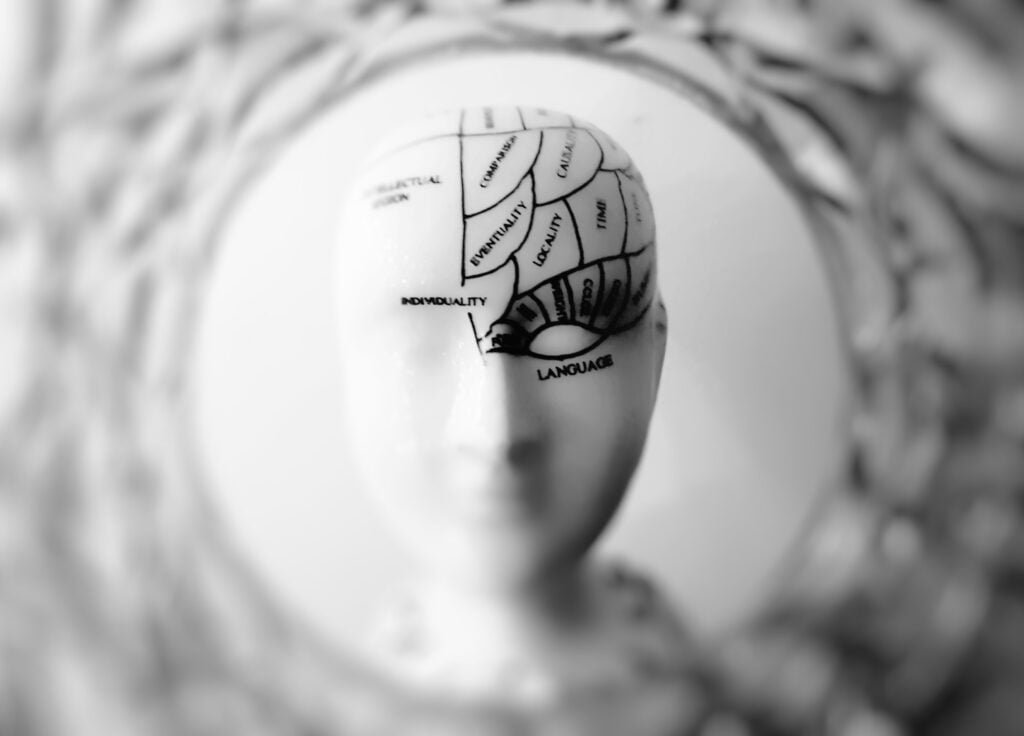In today’s digital age, business cards may seem like a relic from the past. However, they still hold immense value and play a crucial role in making a lasting impression. Knowing how to design business cards in Illustrator can give you the creative freedom to showcase your brand identity and leave a memorable mark. Whether you’re a freelancer, an entrepreneur, or a professional looking to stand out, this article will guide you step-by-step through the process of designing eye-catching business cards that effectively communicate your message and leave a lasting impact on potential clients and contacts. So get your creative juices flowing and let’s dive into the world of business card design in Illustrator!

Choosing the Right Template
When designing business cards in Illustrator, the first step is to choose the right template. There are numerous templates available online that can serve as a starting point for your design. These templates come in various styles and layouts, so take some time to explore different options and find one that aligns with your vision.
Exploring available templates
Start by browsing through the available templates and consider the overall look and feel they convey. Some templates may have a more modern and sleek design, while others may have a more classic and elegant style. Think about the impression you want to make with your business card and choose a template that reflects that.
Considering the purpose and audience
Next, consider the purpose and audience for your business card. Are you designing a card for a corporate business or a creative venture? The design elements and color scheme you choose should align with your target audience’s expectations and preferences. For example, a business card for an upscale law firm may have a more formal and professional design, while a card for a graphic designer can be more colorful and artistic.
Selecting an appropriate layout
Once you’ve narrowed down your options, select a template with a layout that suits your needs. Consider the amount of information you need to include on the card and choose a layout that allows for clear and organized presentation. Some templates offer multiple sections for different types of information, such as contact details, social media handles, or a brief description of your services.
Setting Up the Document
After selecting the template, it’s time to set up the document in Illustrator. This step involves determining the size and orientation of the business card, setting bleed and trim marks, and choosing the color mode.
Determining the size and orientation
Start by determining the size of your business card. In most cases, the standard size for a business card is 3.5 inches by 2 inches. However, you can also opt for a custom size depending on your preferences or specific printing requirements. Additionally, decide whether you want your business card to be in a landscape or portrait orientation.
Setting bleed and trim marks
To ensure that your design extends to the edge of the printed card without any white borders, it’s important to set up bleed and trim marks. Bleed refers to the area outside the final dimensions of your business card that will be trimmed off during the printing process. Trim marks indicate where the card will be cut. Properly setting up bleed and trim marks ensures that your design looks seamless and professional when printed.
Choosing the color mode
When designing business cards, it’s essential to choose the appropriate color mode. For print design, the recommended color mode is CMYK (Cyan, Magenta, Yellow, Black) as it is optimized for the printing process. This color mode ensures that the colors in your design will accurately translate onto the printed card.

Adding and Formatting Text
Once the document is set up, it’s time to add and format the text for your business card. This step involves creating a text box, choosing a suitable font, adjusting font size and spacing, and aligning and justifying the text.
Creating a text box
In Illustrator, create a text box by selecting the Text Tool and clicking and dragging on the document where you want the text to appear. This text box will serve as the container for your business card’s content.
Choosing a suitable font
Choose a font that aligns with the style and tone you want to convey. Consider factors such as readability, professionalism, and brand consistency. Select a font that is clean and easy to read, especially for important details such as your name and contact information. Experiment with different font options to find the one that best suits your design.
Adjusting font size and spacing
Ensure that the text is legible by adjusting the font size appropriately. Important information like your name and job title should be slightly larger than secondary details such as your phone number or email address. Additionally, consider the spacing between letters and lines to maintain readability and visual balance.
Aligning and justifying the text
Aligning and justifying the text helps create a clean and organized look for your business card. Use the alignment tools in Illustrator to align the text either to the left, right, center, or justify it, depending on your design preferences. Justifying the text ensures that it is evenly aligned on both the left and right margins.
Inserting Images and Graphics
To enhance the visual appeal of your business card, you can also insert images and graphics. This step involves importing images into Illustrator, placing and scaling them, and editing and manipulating graphics.
Importing images into Illustrator
To insert an image into your business card design, go to the File menu, select Place, and navigate to the location where your image is saved on your computer. Choose the image you want to insert and click “Place” to add it to your document. Position the image within the designated area and adjust its size as needed.
Placing and scaling images
When placing images on your business card, be mindful of the composition and overall design. Consider how the image interacts with other elements on the card and ensure it does not overpower the important text and contact information. Use the scale tool to adjust the size of the image while maintaining its aspect ratio.
Editing and manipulating graphics
If you want to further enhance or customize your images and graphics, Illustrator offers a range of editing and manipulation tools. You can adjust the brightness, contrast, and colors of an image using the Image Adjustments menu. Additionally, you can apply filters, masks, and other effects to create unique visual elements that align with your design concept.

Utilizing Colors and Backgrounds
To make your business card visually appealing and memorable, it’s important to utilize colors and backgrounds effectively. This step involves selecting a color scheme, creating gradients and patterns, and using background images.
Selecting a color scheme
Choose a color scheme that aligns with your branding and design concept. Consider your company’s logo, website, and other marketing materials to maintain brand consistency. A well-chosen color scheme enhances the overall aesthetic of your business card and creates a cohesive visual identity.
Creating gradients and patterns
Gradients and patterns can add depth and visual interest to your business card design. Experiment with different gradient combinations and pattern styles to find a visually appealing option that complements your overall design. When using gradients or patterns, ensure they do not overpower the text or other important elements on the card.
Using background images
Another option to enhance your business card is to use background images. These images can help convey a specific mood or theme that aligns with your brand or industry. When using background images, make sure they do not interfere with the legibility of your text. Adjust the opacity or apply filters to ensure the text remains visible and readable.
Incorporating Logos and Branding
For a professional and cohesive look, it’s important to incorporate logos and branding elements into your business card design. This step involves importing and placing logos, maintaining brand consistency, and adding additional branding elements.
Importing and placing logos
To include your company logo on the business card, import it into Illustrator using the “Place” command. Position the logo in a prominent and visually appealing location, such as the top or bottom corner of the card. Ensure the logo maintains its clarity and integrity by using high-resolution files.
Maintaining brand consistency
When designing a business card, it’s crucial to maintain brand consistency. Use the same fonts, colors, and graphic elements as your other marketing materials to create a cohesive visual identity for your brand. Consistency in branding helps establish recognition and professionalism.
Adding additional branding elements
Consider adding additional branding elements to further enhance your business card design. These can include icons, symbols, or graphic elements that represent your industry or the services you offer. These elements should complement the overall design while adding visual interest.
Designing the Layout
An effective business card design requires careful consideration of the layout. This step involves organizing information and elements, establishing visual hierarchy, and utilizing white space effectively.
Organizing information and elements
Arrange the information and design elements on your business card in a logical and aesthetically pleasing way. Group related information together, such as contact details or social media handles, to create a clear and organized layout. Consider the hierarchy of information and prioritize the most important details.
Establishing visual hierarchy
Establishing a visual hierarchy helps guide the viewer’s attention and ensures that the most important information stands out. Use font size, color, and placement to differentiate between primary and secondary information. Your name and job title should typically be more prominent than other details.
Utilizing white space effectively
White space, also known as negative space, is the empty area between design elements. Effective use of white space improves readability and overall visual balance. Avoid overcrowding the card with too much text or images. Instead, leave enough space to allow the design elements to breathe and create a clean and professional look.
Adding Special Effects and Finishing Touches
To add a touch of creativity and uniqueness to your business card design, consider incorporating special effects and finishing touches. This step involves applying effects like shadows and glows, adding textures and gradients, and fine-tuning the overall design.
Applying effects like shadows and glows
Effects like shadows and glows can add depth and visual interest to your business card. Experiment with different options and settings to see what works best with your design. These effects can be applied to both text and graphic elements to make them stand out.
Adding textures and gradients
Textures and gradients can give your business card a tactile and visually appealing look. Consider adding subtle textures to the background or graphic elements to create depth and visual interest. Gradients can be used to add a contemporary and dynamic touch to your design.
Fine-tuning the overall design
Once you have added special effects, take a step back and evaluate the overall design. Pay attention to the balance of elements, color harmony, and overall aesthetics. Make any necessary adjustments to ensure that the business card looks polished and visually pleasing.
Proofreading and Finalizing
Before sending your business card design for printing, it’s crucial to thoroughly proofread and finalize every detail. This step involves checking for spelling and grammatical errors, reviewing the design for coherence, and preparing the file for printing.
Checking for spelling and grammatical errors
Go through all text elements on your business card and carefully check for any spelling or grammatical errors. Spelling mistakes and typos can detract from the professionalism and credibility of your business. Double-check names, phone numbers, email addresses, and any other contact information.
Reviewing the design for coherence
Take a comprehensive look at the design as a whole and ensure that all elements work together cohesively. Check for consistency in font choices, colors, and spacing. Verify that your logo and other branding elements are correctly positioned and scaled. This final review ensures that your business card looks polished and well-designed.
Preparing the file for printing
Before sending your business card design off to the printer, it’s important to prepare the file correctly. Convert all text to outlines to avoid font compatibility issues. Check that the bleeds and trim marks are properly set up. Save a copy of the file in the appropriate format specified by the printer, such as PDF or EPS.
Exporting the Design
To ensure that your business card design is ready for printing, it’s important to export it in the appropriate format. This step involves choosing the appropriate file format, optimizing the file size for printing, and saving the design for future editing.
Choosing the appropriate file format
Consult with your printer to determine the preferred file format for the printing process. Common formats include PDF, EPS, or AI. Each format has its own benefits and specifications, so choose the one that aligns with the printer’s requirements for optimal results.
Optimizing file size for printing
Reduce the file size of your business card design without compromising its quality or resolution. This can be achieved by compressing images, simplifying complex vector elements, and minimizing unnecessary layers. A smaller file size streamlines the printing process and ensures faster upload times.
Saving the design for future editing
Save a copy of your finalized business card design in a format that allows for future editing. This ensures that you can easily make changes or updates to your card in the future, such as updating contact information or making design tweaks. By saving a layered file, such as an AI or PSD file, you can preserve all the elements and layers for future use.
Designing business cards in Illustrator requires careful consideration of various elements, from choosing the right template to finalizing the design. By following these steps and paying attention to detail, you can create a professional and visually appealing business card that effectively represents your brand and leaves a lasting impression.

